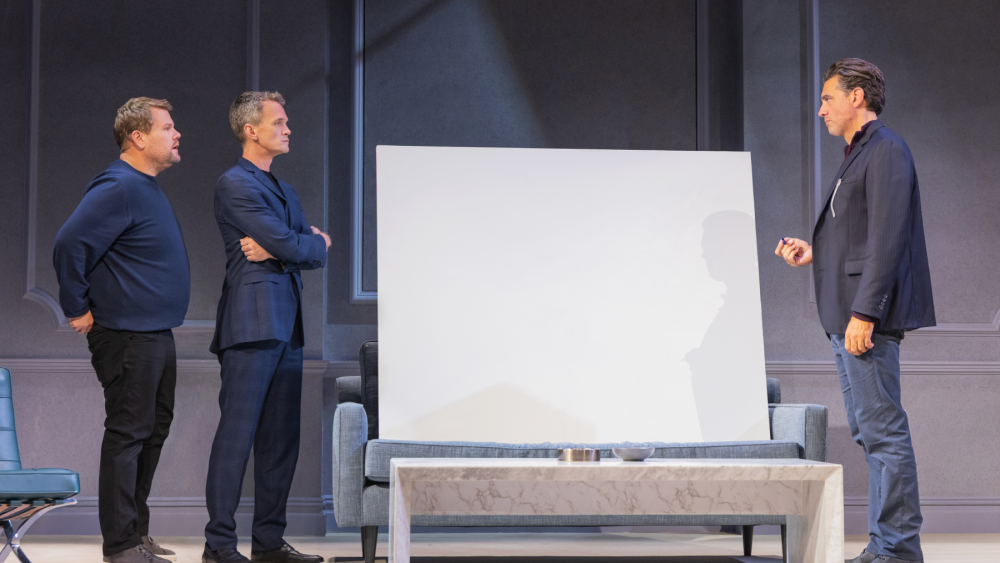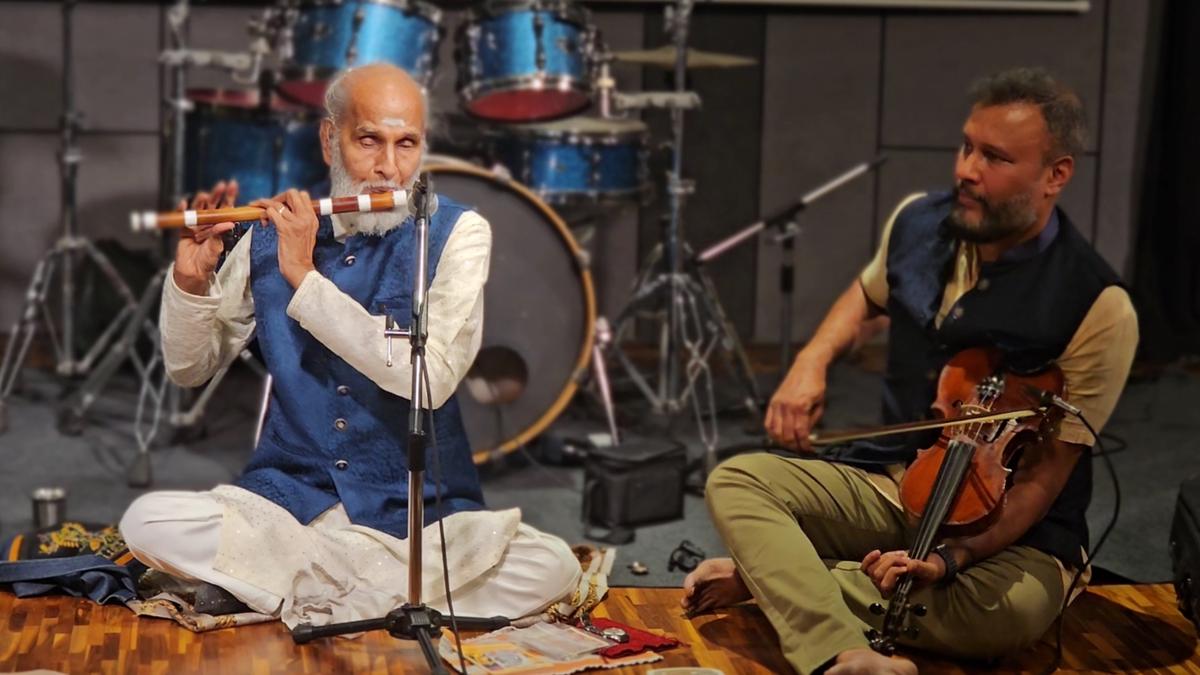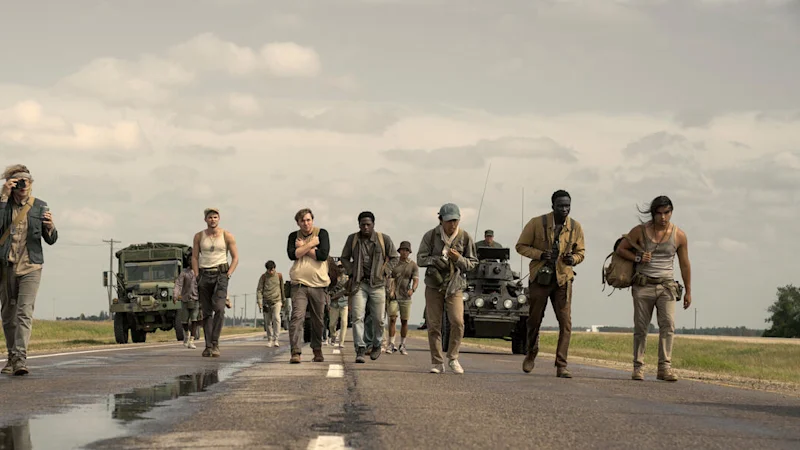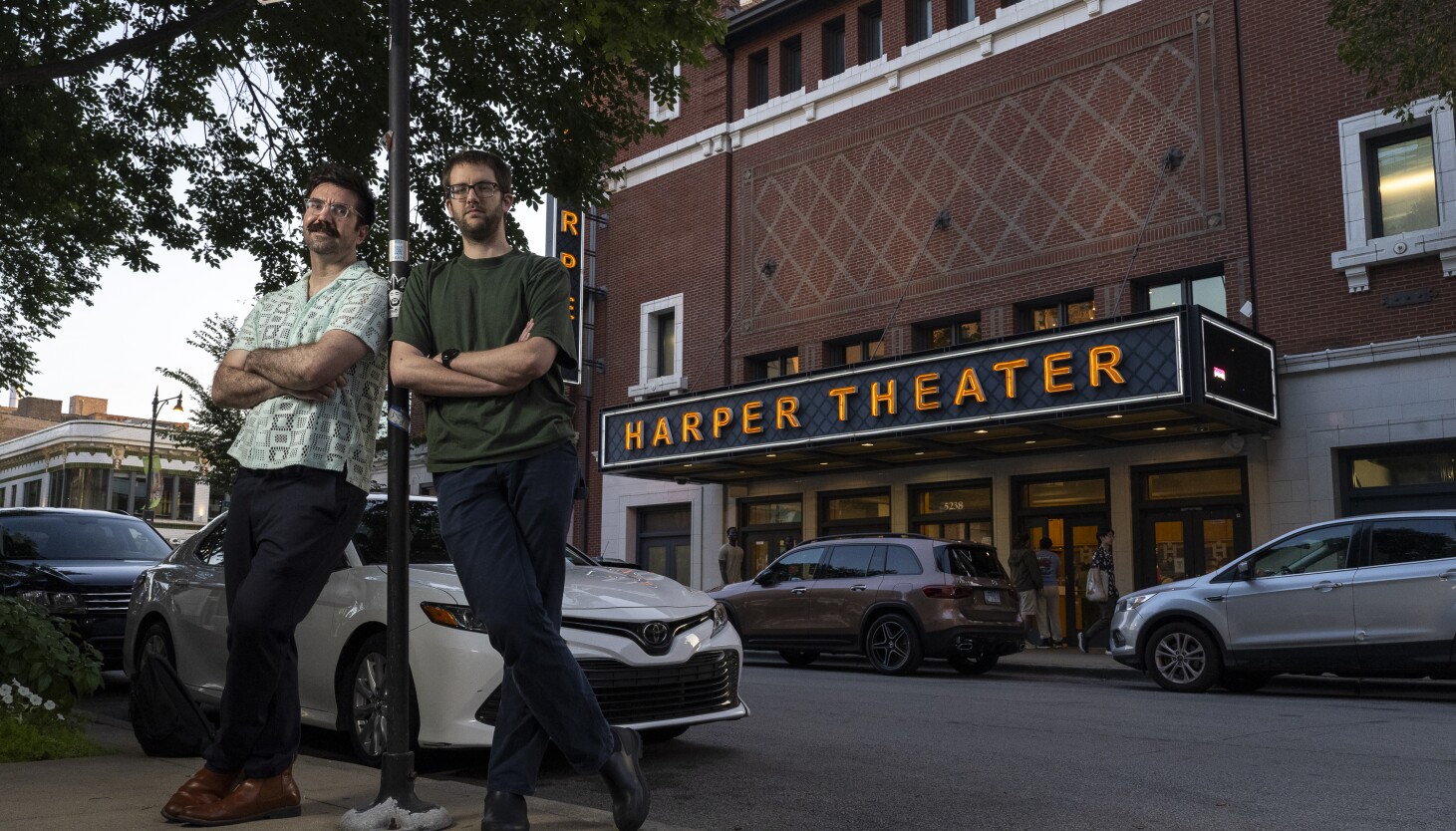
I am among the many potential audience members for “Art,” the new revival of Yazmina Reza’s sly, knowing play, who has never thought much about James Corden. That’s not to say I haven’t thought much of him — from what clips I’ve seen of his now-concluded CBS talk show, he seems game and winning. Unfortunately, his Tony-winning turn in “One Man, Two Guvnors,” in 2012, predates my peak theatergoing years; to many in my cohort, Corden was a content-generation machine, ginning up “Carpool Karaoke” segments that were fun but ephemeral.
Some two years removed from the end of his “Late Late Show,” Corden is reasserting himself as a major theater actor, and his turn as the wobbliest vertex of a friendship triangle would, alone, make the new production of this slippery social satire worth seeing. Happily, though, the play’s depths reward a second look on Broadway (following a 1998 run that won the top Tony). The current Broadway climate has been thick on the ground with revivals of familiar titles anchored by big-name stars; the performances in “Art” — including and especially Corden’s alongside Bobby Cannavale and Neil Patrick Harris — make the case for this as something more urgent than that.
The play, translated from the French by Christopher Hampton, concerns itself with the terrain of heterosexual male friendship — a rewarding topic for an adept playwright, given how much subtext lies beneath the surface, but a challenging one to dramatize for just the same reason. (One solution to the problem that so much goes unsaid between friends: All three address the audience in soliloquys at various points. Director Scott Ellis and lighting designer Jen Schriever, shifting the lights as we enter the characters’ minds, make these transitions land.) Harris’ Serge is delighted by his purchase of a $300,000 canvas; the term “canvas” is used advisedly, as it’s unclear at first whether paint has been applied to it at all. It’s solid white. Cannavale’s Marc is repulsed by Serge’s judgment, while Corden’s Yvan — the kind of old friend one keeps around past the point one remembers what about him one used to like — is just happy to be part of the conversation.
Reza’s other best-known play stateside, “God of Carnage,” placed two forces — two married couples representing slightly but insistently divergent social classes — into conflict. With a party of three, things are trickier: Over the course of the play, the distinctions that seemed small at first are amplified: Serge’s pride in his painting, for instance, is amplified by quite how much a bite out of his finances its price tag represents. That it’s such an outlay of cash — that, at least for their class of modern Parisians, Serge is comfortable but not truly rich — also accounts in some part for Marc’s anger. (A choice likely borne of practicality ends up bearing fruit: As the play has one set, the characters’ apartments, by scenic designer David Rockwell, are effectively identical but for what’s on the walls. Their differences, in other words, are marginal, even as those differences take over their lives.)
Yvan being obviously less well-off than his two compatriots, and thus nearly entirely excluded from their higher-level conversation about how they’re spending their wealth, builds in tension to an outright explosion. The various pressures in Yvan’s own life (pressures to which his friends are blind) push him to melt down, which seems to be about tensions around his impending marriage but ends up being about… well, everything. It hardly help matters that his friends aren’t merely listening ears but take the opportunity to finally share with Yvan the ways in which they think he’s ruining his own life.
This review isn’t meant to slight Cannavale and Harris: The former is characteristically able to conjure smartest-guy-in-the-room umbrage, as if irritated to even be forced to explain himself, while the latter is at his best when preening over his new investment. (Just under the surface, Harris lets us understand, is a fear that there’s a joke he’s not quite getting.) But it’s Corden, who wraps up his scene of rage pallid and gasping in a manner that somehow doesn’t feel showy and unearned, who’s the standout. When he reaches a point beyond reason, it’s a moment that transforms, first, our sense of what the performer can do and, then, the play itself. Up to Corden’s breakdown, the play’s been in a tradition of talky comedies of manners that stretches from “Seinfeld” back to Wilde and Molière; after it, we’re on more treacherous ground, and, suddenly, anything seems possible. The play itself becomes a blank white space waiting for the actors to color it with something unexpected.
Which may help account for why the play’s conclusion hits with such seismic force. Suffice it to say that all parties’ views of the empty canvas — one that, Serge insists at first, is suffused with Rothko-esque bands of color, if you just know how to look — have shifted by the time they hash out their disagreement. That one character claims to find within it a man who traverses a great distance makes a poetic sort of sense. All three of these characters end up far from where they began, having been pushed there by a conflict that seemed at first to be entirely insubstantial. Say this much: At least one of the actors, returning to the stage after having fun on the sillier side of pop culture for a while, is far from where he’s been, too.



